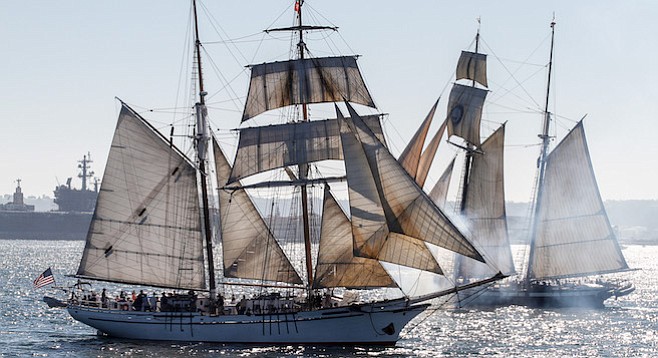 Facebook
Facebook
 X
X
 Instagram
Instagram
 TikTok
TikTok
 Youtube
Youtube

Though steam-driven or steam-assisted vessels first ventured onto the high seas in 1831, the main turning point from sail to side-wheel and eventually propeller for naval technology was during the Civil War.
During the war, many naval firsts led to the end of the tall ship era. Some of those include the first aircraft carrier (specially fitted ships with wide, flat decks for launching and landing observation balloons), the first submarine sinking of a ship (the Confederate H.L. Hunley, a 40-foot mostly submerged vessel with a bomb attached a 20-foot pole to her prow, sank her target, the Union’s Housatonic, when her deployed ‘torpedo’ exploded, which caused the loss of the submarine and her crew), and the ironclad vessels that were impenetrable by conventional artillery.
As technology advanced, sails shortened and gave way to fuel-driven design. The industrial revolution advanced seafaring vessels from steam to internal combustion, but for those who loved history and the romance of sailing days past when tide, current, wind and crew made the difference in a successful voyage, tall ships would have been lost altogether. Thanks to those naval history buffs, ships were refitted, repaired and rebuilt full-size.
This week, more than twenty tall ships and other vessels will be on display August 31 through September 4 in San Diego Bay for the Festival of Sail. The Parade of Sail on Thursday from 11:00 am — 3:00 pm will be visible from Shelter Island, Harbor Island, and the Embarcadero.
Cannon battles are also available to view from shore or, for $50 to $75, from aboard one of the ships in battle.


Though steam-driven or steam-assisted vessels first ventured onto the high seas in 1831, the main turning point from sail to side-wheel and eventually propeller for naval technology was during the Civil War.
During the war, many naval firsts led to the end of the tall ship era. Some of those include the first aircraft carrier (specially fitted ships with wide, flat decks for launching and landing observation balloons), the first submarine sinking of a ship (the Confederate H.L. Hunley, a 40-foot mostly submerged vessel with a bomb attached a 20-foot pole to her prow, sank her target, the Union’s Housatonic, when her deployed ‘torpedo’ exploded, which caused the loss of the submarine and her crew), and the ironclad vessels that were impenetrable by conventional artillery.
As technology advanced, sails shortened and gave way to fuel-driven design. The industrial revolution advanced seafaring vessels from steam to internal combustion, but for those who loved history and the romance of sailing days past when tide, current, wind and crew made the difference in a successful voyage, tall ships would have been lost altogether. Thanks to those naval history buffs, ships were refitted, repaired and rebuilt full-size.
This week, more than twenty tall ships and other vessels will be on display August 31 through September 4 in San Diego Bay for the Festival of Sail. The Parade of Sail on Thursday from 11:00 am — 3:00 pm will be visible from Shelter Island, Harbor Island, and the Embarcadero.
Cannon battles are also available to view from shore or, for $50 to $75, from aboard one of the ships in battle.
Comments